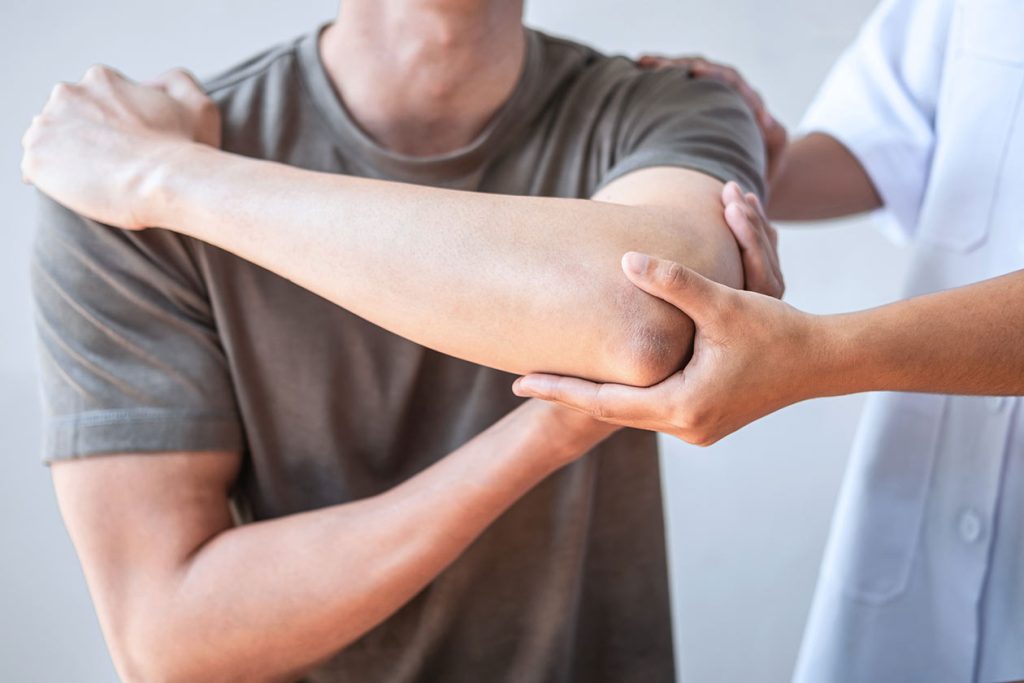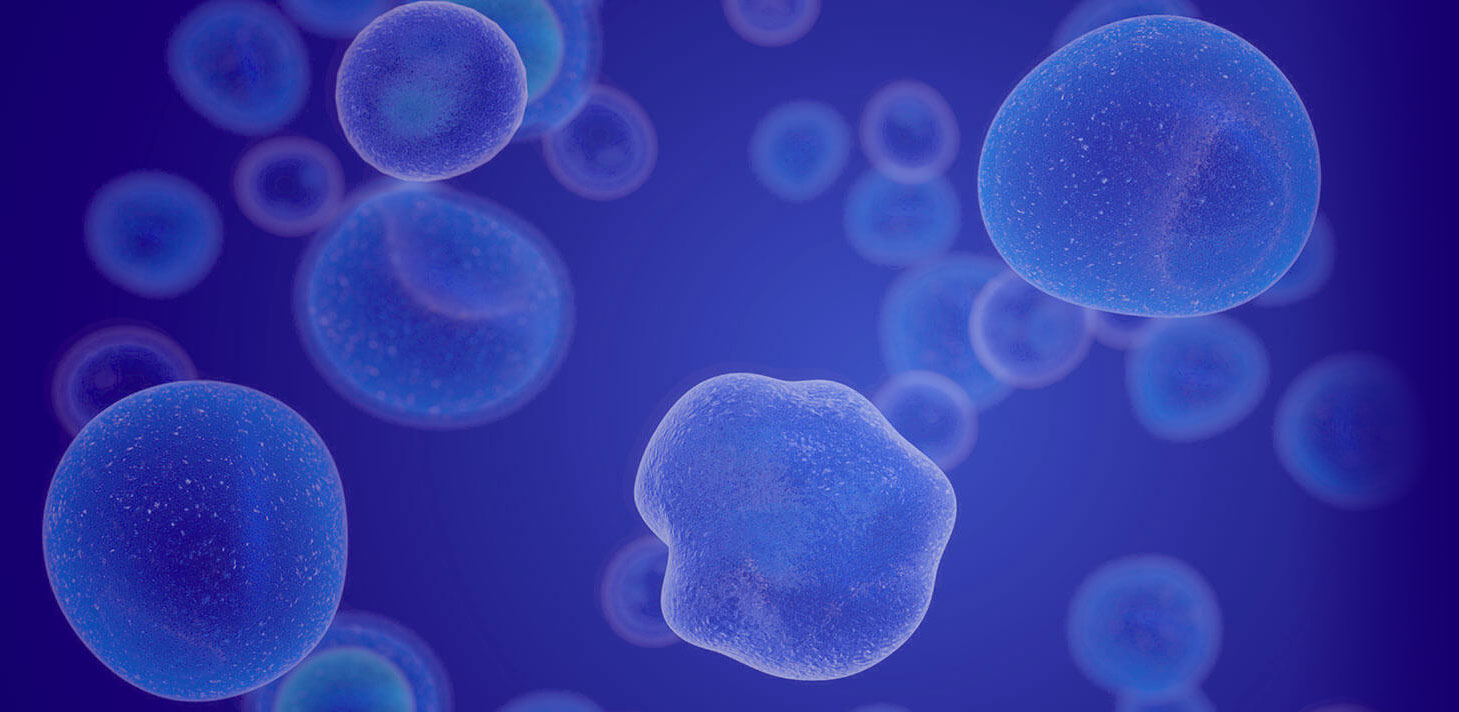Stem Cells for Muscle Injuries
Conveniently located to serve the areas of Greenville, SC, Spartanburg, SC, Columbia, SC, Anderson, SC and Asheville, NC
Stem cells have the unique ability to transform into different types of cells, including muscle cells. Scientists have explored the potential of specific stem cells in aiding muscle repair, especially in situations where conventional therapies have failed. Stem cells can transform into muscle cells, bone, and cartilage. Additionally, these stem cells possess anti-inflammatory and immunomodulatory characteristics that can assist in the healing process. Patients can find relief from a wide range of muscle injury building and expanding on past or current treatment methods.

In Greenville, SC; Spartanburg, SC; Columbia, SC; Anderson, SC; Asheville, NC, John C. Haasis III, M.D. is the leading authority on stem cell therapy for muscle injury repair. He has extensive knowledge and experience in regenerative medicine and has successfully treated numerous patients suffering from muscle injuries using stem cell therapy. At Daisy Stem Cell Therapy and Advanced Regenerative Medicine, patients receive comprehensive care throughout their treatment journey. Our team is committed to providing personalized and compassionate care. We will work closely to ensure you feel supported and ready to receive this groundbreaking treatment. Call (864) 775-5682 to book your consultation and start your journey in the incredible world of stem cell therapy!
Contents
- 1 Repairing Muscle Injury in South Carolina
- 2 What are the Benefits of Stem Cells for Muscle Injury?
- 3 Who is the Ideal Candidate for Stem Cell Therapy?
- 4 Personal Consultation
- 5 Preparing For Your Stem Cell Therapy Appointment
- 6 The Procedure
- 7 Recovery After Stem Cell Therapy
- 8 What Results Can Patients Expect?
- 9 What is the Cost of Stem Cells for Muscle Injury in the Carolinas?
- 10 References
Repairing Muscle Injury in South Carolina
Muscle injury can happen when you least expect it. Sports injuries may stem from a hit or fall, dancers may experience muscle strain from being overstretched or overworked, and we can all fall victim to random accidents.
Right after getting hurt, the muscles start to break down because of released proteins; this causes debris to build up in the injured area. Then, white blood cells called neutrophils and macrophages come to clean up the debris and start an inflammatory response. [1] Even though macrophages may cause inflammation, they can also release growth factors that help tissue repair. They also release other signals that can help recruit special cells to help with muscle regeneration.
When Dr. Haasis introduces stem cells into the injured muscle, these cells can differentiate and turn into new muscle cells to help repair the damaged tissue. Stem cells can also release growth factors and contribute to cell signaling, leading to the faster and more effective healing of muscle injury.
Scientists are still trying to understand where certain types of cells in the body come from and how they are related to muscle stem cells. One group of cells that has recently been studied is MDSC (muscle-derived stem cells), and they have some unique features that make them very promising for regenerative medicine. These cells have a better chance of surviving in the body long-term compared to other types of cells called myoblasts. They also can turn into many different types of cells and have the potential to keep regenerating for a long time, even up to 300 times, which is more than other types of stem cells. [2]
What are Undifferentiated Cells?
Undifferentiated cells have not yet developed into specialized cells with specific functions or structures. They are in an early stage of development and have the potential to differentiate into various cell types. Undifferentiated cells are important for growth and repair processes in the body, as they can differentiate into the specific cell types needed to replace damaged or dying cells.
In the case of stem cells, researchers have found ways to manipulate the differentiation process to direct stem cells to differentiate into specific cell types; this is typically done by exposing the stem cells to specific signaling molecules or growth factors that stimulate the expression of certain genes and promote differentiation into the desired cell type.
What are the Benefits of Stem Cells for Muscle Injury?
Stem cell therapy offers several potential benefits compared to traditional treatments such as surgery or medications. First, stem cell therapy can promote natural healing and regeneration of the injured tissue rather than simply masking symptoms or replacing damaged tissue with foreign materials, leading to a more complete and long-lasting recovery.
Stem cell therapy is less invasive and has fewer side effects than surgery. Stem cells can be delivered to the injured area by injection without requiring major surgery or extended hospital stays.
Stem cell therapy has the potential to be more cost-effective in the long run. While the initial cost of treatment may be higher than a prescription for pain meds, stem cell therapy can potentially provide a more permanent solution to the injury, reducing the need for ongoing treatments and medical expenses.
Who is the Ideal Candidate for Stem Cell Therapy?
Candidates for stem cell therapy have a muscle injury that is not responding to traditional treatments, such as rest, physical therapy, and medication. They should also have healthy immune and organ systems and no history of cancer or blood-borne diseases.
The specific type of stem cell therapy may also have additional eligibility criteria, such as age or severity of the injury. It is important to consult with Dr. Haasis, an expert on stem cells and their benefits, to determine if stem cell therapy is appropriate for an individual’s case.
Personal Consultation
Stem cells have the ability to regenerate damaged tissues and stimulate the body’s natural healing processes. Even if you have attempted other methods of muscle injury repair without success, the emerging power of stem cells may offer a new opportunity for recovery.
At Daisy Stem Cell Therapy and Advanced Regenerative Medicine, Dr. Haasis is a renowned expert in various schools of thought regarding muscle injury. His extensive knowledge and experience enable him to provide you with the best possible guidance for your recovery journey.
Write down any questions or concerns about stem cell therapy; this will help you stay organized during your appointment and ensure that all your questions are answered. Furthermore, Dr. Haasis will want to know about your medical history. Ensure that you provide accurate information about anything that may be relevant.
By incorporating the innovative potential of stem cells and Dr. Haasis’s guidance, we aim to enhance your recovery and help you achieve optimal health and wellness. We encourage you to consult Dr. Haasis and leverage his expertise to ensure optimal results. Call today!
Preparing For Your Stem Cell Therapy Appointment
Preparation instructions may include the following:
- Dietary restrictions
- Not using certain medications
- Refraining from certain activities
Dr. Haasis will provide a complete list to ensure you optimize the success of your stem cell therapy.
The Procedure
The stem cell injection procedure is quick and easy; patients can return to normal activities shortly after the treatment. However, it’s important to follow the post-treatment instructions provided by Dr. Haasis to ensure a successful recovery.
Recovery After Stem Cell Therapy
To optimize your recovery, it’s important to avoid strenuous activity during the recovery period, particularly activities that stress the affected area. Dr. Haasis may recommend specific exercises or physical therapy to help you regain strength and mobility without risking further injury.
In addition to physical rest and activity modification, it’s also important to follow a healthy diet and lifestyle to support the body’s natural healing processes; this may include:
- Staying hydrated
- Getting plenty of rest
- Avoiding unhealthy habits like smoking or excessive alcohol consumption
By taking a holistic approach to your recovery, you can help ensure the success of your stem cell therapy treatment and enjoy long-lasting relief from muscle injury.
What Results Can Patients Expect?
Following the procedure, it’s common to experience mild discomfort and inflammation at the injection site(s). This normal part of the healing process typically subsides within a few days.
The full benefits of stem cell therapy may take several weeks to manifest. During this time, your body works to repair and regenerate damaged tissue, and allowing this process to unfold naturally is important. While it may be tempting to rush the healing process, doing so can delay or undermine the benefits of the treatment.
With guidance from a qualified healthcare provider like Dr. Haasis and a commitment to self-care, you can return to the activities you love with renewed strength and vitality.
What is the Cost of Stem Cells for Muscle Injury in the Carolinas?
Dr. Haasis looks forward to discussing all aspects of your treatment with you during the consultation appointment. He understands that each patient is unique, and he will take the time to develop a personalized treatment plan tailored to your specific needs and goals. Whether you’re seeking relief from a sports-related injury, degenerative disease, or other disorder, Dr. Haasis has the expertise and experience to help you achieve the best possible outcome.
If you want to learn more about stem cell therapy for muscle injury or other conditions, contact Dr. Haasis today to schedule a consultation. With his expertise and dedication to patient-centered care, you can trust that you’re in good hands throughout the treatment process—call (864) 775-5682 to get started. We look forward to treating you!
References
- Orimo S, Hiyamuta E, Arahata K, Sugita H. Analysis of inflammatory cells and complement C3 in bupivacaine-induced myonecrosis. Muscle & Nerve. 1991;14(6):515-520. https://doi.org/10.1002/mus.880140605
- Lee JY, Qu-Petersen Z, Cao B, et al. Clonal isolation of muscle-derived cells capable of enhancing muscle regeneration and bone healing. The Journal of Cell Biology. 2000;150(5):1085-1100. https://doi.org/10.1083/jcb.150.5.1085


